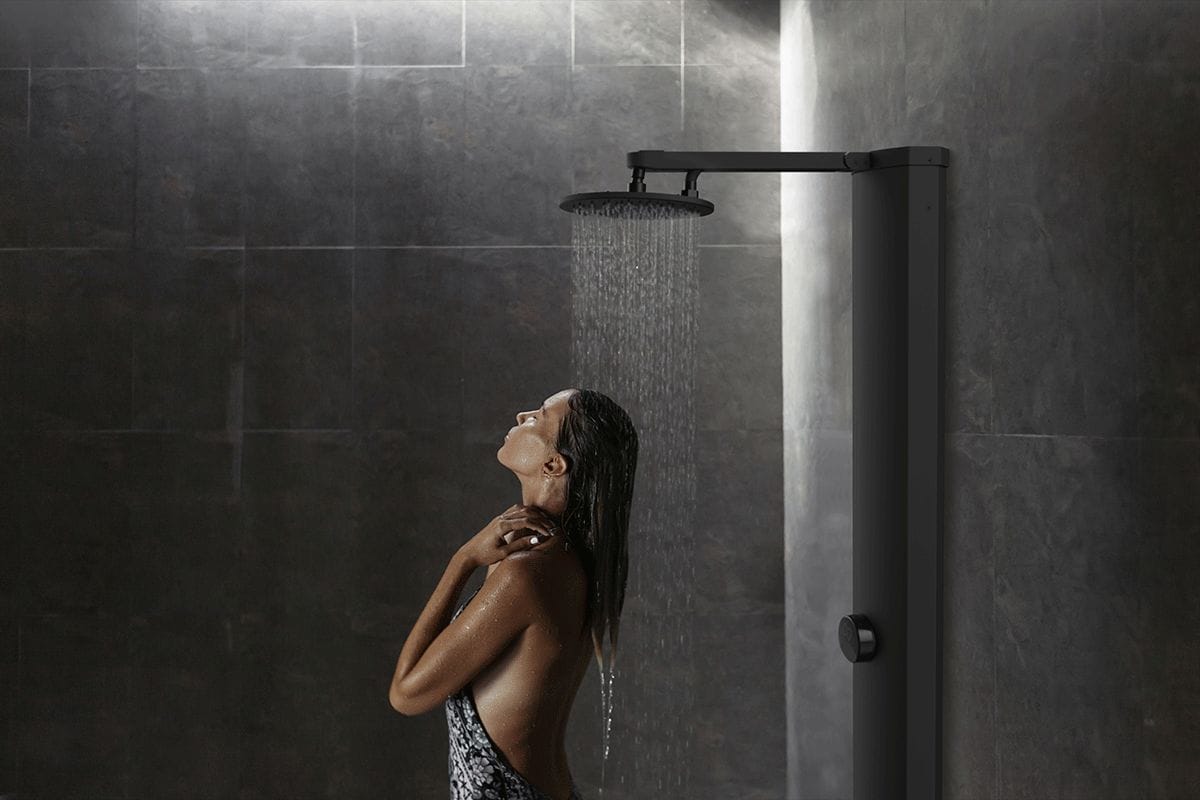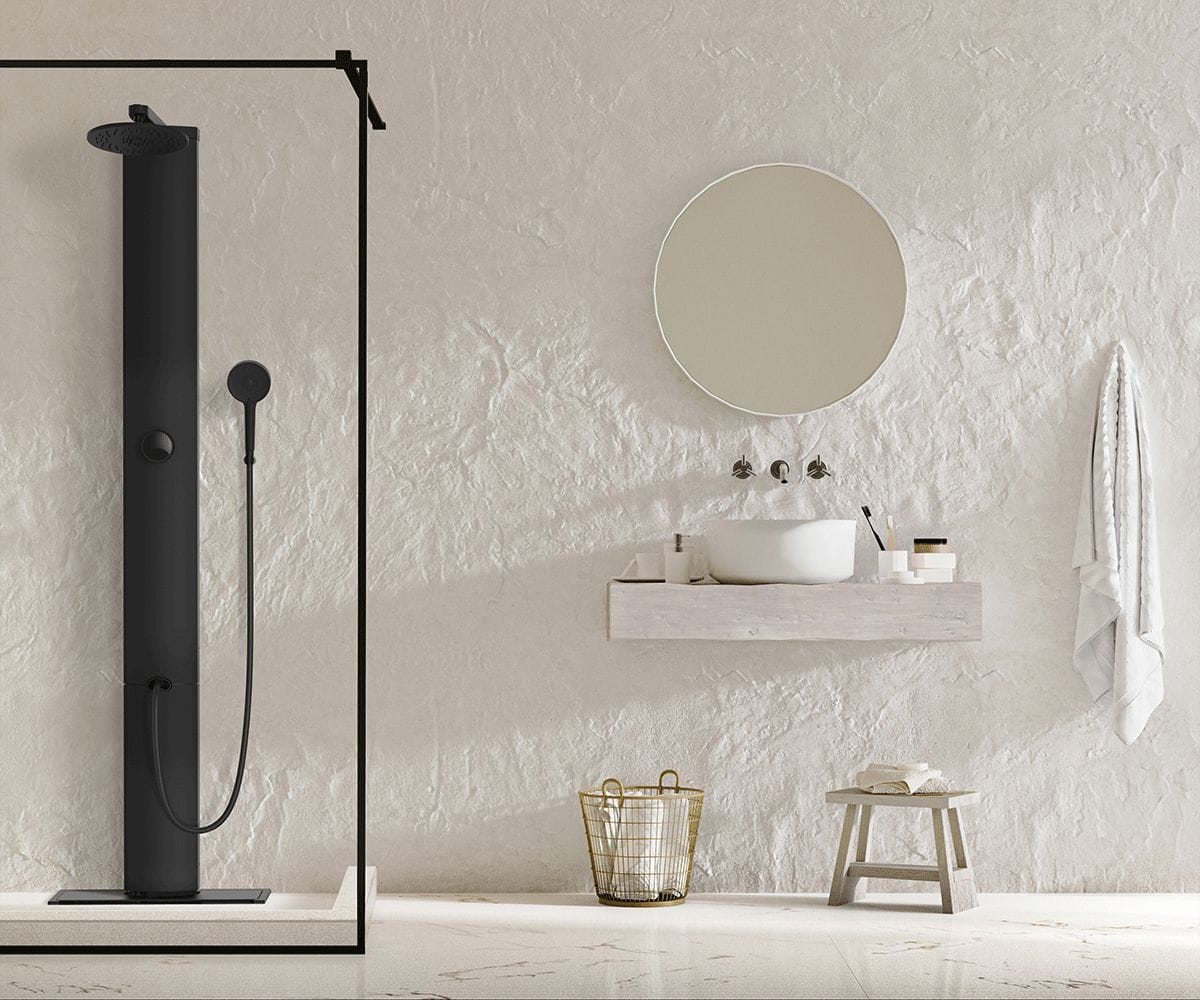RainStick: The Art of Sustainable Showering
Water and energy conservation are important in today’s climate of finite resources and expanding populations. A recently developed product promises to provide homeowners with major savings in both energy and water. It’s called RainStick, and one of its founders says users can reduce their water consumption by almost a swimming pool's worth over the course of a year. With a payback period of just over five years, modular builders focused on sustainability are taking note.

RainStick’s journey begins in the Okanagan Valley, Canada’s only desert region. Co-founders Sean and Alisha McFetridge both grew up with the realities of living in a desert. Both became convinced that something needed to be done to reduce water use in the home. Sean’s experience as a lifeguard at a waterpark when he was a teenager began his education in resource management. He was in charge of water maintenance at the park and ensured that the proper chemicals were present to keep customers safe and healthy. He later spent years working at Home Depot as their national energy manager.
Alisha, the current CEO and co-founder of RainStick, paired her tech background with a passion for water conservation cultivated during her international travels to places like the Masai Mara in Kenya.
Conserving Our Most Precious Resource
According to the EPA, the average American family of four uses 400 gallons of water per day. On average, approximately 70 percent of that water is used indoors, with the bathroom being the largest consumer. The average American uses 70 gallons per day for indoor use. The McFetridge’s have a goal to reduce that to 13 gallons of water per person per day. So, they decided to tackle one of the biggest water wasters, the shower. The average shower, at 8-10 minutes, uses 16-21 gallons of water.
RainStick began in 2019. In its current iteration, version 11, it’s capable of reducing both water and energy use by 80% each while providing double the water pressure that’s found in today’s low-flow showerheads. It does this through recirculation and real time water treatment.
The device is mounted on the outside of the wall of the shower. It’s connected to the potable water supply and drain, but temporarily diverts wastewater to a three-stage treatment process before recirculating it. As water goes down the drain, it is redirected to a reservoir that connects to the drain P-trap, similar to a linear drain. The company recently introduced a custom shower base that allows installation to be completed in one day.

The drain water is treated and recirculated six times before it is finally released into the home’s sewer system. In recirculate mode, the shower uses just 0.5 gallons per minute while giving users the experience of three gallons per minute (a low-flow shower provides 2.1 gallons per minute). It also has the option of a more traditional shower experience with all fresh water from the supply, but the showerhead flow is reduced to 1.8 gallons per minute.
The three-stage cleaning process happens in real time and consists of a high intensity UV LED light treatment, a micron screen that removes anything larger than a grain of sand, and the constant introduction of a small amount of fresh water throughout the process. Fresh water helps maintain temperature and ensures that the entire water stream is replaced on a regular basis. The only maintenance required is to remove and clean the micron filter twice a month and top off the cleaning solution in the appliance once per month.
The system can be connected to a smart home hub, if desired. Homeowners can then track water and energy savings through sensors embedded in the appliance. Alisha hopes that more smart home users will take interest in their water use, not just energy. “It’s typically net zero homeowners who are really focused on the energy envelope and haven’t made space for water conservation and net zero water technology. I would say water tech is about ten years behind energy tech.”
The appliance requires a GFCI connection at the back of the shower and a drain that is slightly higher than in a traditional shower. With the new shower pan and upcoming product offerings, installation will be even easier.
Gray water code requirements are not an issue with RainStick. “The nice thing about our technology is that it’s not deemed gray water. It’s only gray water once it leaves the sanitary drain. We are never holding water in between sessions. No one uses the same water, it’s just point of use recirculating up to six times for the duration of your shower, and then we’re cleaning that water in real time.”

Conserving Our Most Precious Resource
According to the EPA, the average American family of four uses 400 gallons of water per day. On average, approximately 70 percent of that water is used indoors, with the bathroom being the largest consumer. The average American uses 70 gallons per day for indoor use. The McFetridge’s have a goal to reduce that to 13 gallons of water per person per day. So, they decided to tackle one of the biggest water wasters, the shower. The average shower, at 8-10 minutes, uses 16-21 gallons of water.
RainStick began in 2019. In its current iteration, version 11, it’s capable of reducing both water and energy use by 80% each while providing double the water pressure that’s found in today’s low-flow showerheads. It does this through recirculation and real time water treatment.
The device is mounted on the outside of the wall of the shower. It’s connected to the potable water supply and drain, but temporarily diverts wastewater to a three-stage treatment process before recirculating it. As water goes down the drain, it is redirected to a reservoir that connects to the drain P-trap, similar to a linear drain. The company recently introduced a custom shower base that allows installation to be completed in one day.
A Work in Progress
The RainStick’s award-winning design is certainly turning heads. They’ve won best innovation awards at the Consumer Electronics Show in the smart home category, a gold award at the Kitchen and Bath Industry Show, and a best water technology award at the BlueTech conference.
The design has gone through many changes, starting as a cardboard construction on a plywood base. As water treatment technology has improved, so has the effectiveness of the device. The team’s goal has always been to ensure that it was easy to use and required very little maintenance, while saving as much energy as possible. The phase one prototype peaked at 60% energy savings, causing them to eliminate the heater that was provided with that version of the system. They also removed the heater to eliminate the chance that something could go wrong with the system. Alisha says, “We worked hard to make sure that the technology is really straightforward and low maintenance. You don’t have to constantly clean little sensors.”
RainStick is intended for homeowners or companies that are interested in building sustainable structures, particularly net zero, or those looking to conserve water either by necessity or because they want to do their part to save this precious resource. “We’re starting to align with builders, homeowners, architects, and designers who are building for the net zero future,” Alisha says.
Primed for Use in Modular Construction
It’s perfectly suited for modular designers and manufacturers because “it allows you to build essentially anywhere. You don’t need to worry so much about hooking up to traditional plumbing capacity.” With many looking to establish homes off-grid, which often means with limited water supply, the RainStick offers an easy way to save significantly on water and energy use. Alisha says the system can save as much as a whole home gray water reuse system, without the high cost. In addition, the system is easy to install and with the new shower base, installation only takes a day.
The filtration and cleaning system is very effective, often providing more hygienic water than a shower today.
Alisha sees RainStick as an additional selling point for manufacturers that are already creating sustainable structures. “It’s something that modular builders can celebrate. They can say, ‘Check it out, we’ve utilized this technology that doesn’t just save water and energy, but it’s also going to save you an average of $1,000 per year in California due to the water and energy savings.’”
The next step for RainStick is a model designed specifically for modular builders, which will be officially announced in early 2024. It will allow manufacturers to easily integrate RainStick into their manufacturing process and put the system behind the wall. The upcoming model will be more cost conscious and come in a variety of styles. They are also looking to expand the line into other bathroom fixtures.
RainStick is available for consumers to purchase both online and in showrooms in Vancouver, Canada and a few in the Bay Area of California. They also have upcoming showrooms in New York and Toronto, Canada. Homebuilders or modular manufacturers can qualify for volume discounts. Alisha says their goal in the next three years is to partner with every aligned modular manufacturer in North America. They want to spread the word about their product and the need
About the Author: Dawn Killough is a freelance construction writer with over 25 years of experience working with construction companies, subcontractors and general contractors. Her published work can be found at dkilloughwriter.com.
More from Modular Advantage
Samantha Taylor: Leading the (Modular) Design of Tomorrow
“With modern technology and the way we’ve all embraced things like BIM, file sharing, and video conferencing since COVID, it’s easy to collaborate with companies in Austria, or Singapore, or anywhere else in the world.”
Greg DeLeon: Military Engineering to Modular Design
Greg DeLeon, a structural engineer at ISE Structural Engineers in Temecula, California, can tell you not only how large a beam needs to be to support a house, but also how much explosives you’ll need to take it down, thanks to his unique combination of professional and military experience.
To Remake North Minneapolis, Devean George Swaps Basketball for Buildings
He’s lived in Los Angeles, Dallas, and San Francisco (to name a few). He’s delivered championships with the Los Angeles Lakers and made career-defining moves with the Dallas Mavericks and the Golden State Warriors. No matter the wins, the championships, or even the seemingly impossible 3-pointers, Devean George has always returned to where it all started for him: Minneapolis.
Chelsi Tryon: Making the World a Better Place
For Chelsi Tryon, Director of Environmental, Social, and Governance (ESG) for WillScot Mobile Mini, nothing is more enjoyable than increasing the
company’s sustainability efforts while simultaneously doing her bit to save the environment.
Joshua Hart: Pushing Boundaries
Joshua Hart, P.E., vice president at Modular
Solutions, can sum up his job responsibilities in one sentence: “I do whatever needs to be done.” Hart thrives on the variety and the opportunity to be involved in every aspect of the company. And it shows! You might say Hart has come full circle.
Jamie Metzger: From Construction to Apparel and Back Again
Growing up in a blue-collar city like Edmonton, Alberta, Canada, it’s no surprise that Jamie Metzger spent some time working labor jobs on construction sites. It’s one of the most common summer jobs in the city. But that’s probably the last predictable thing about this particular story.
Victor Masso: Expanding Modular in Puerto Rico
Victor Masso joined 2 Go Storage, a company started by his grandfather and father, in 2018 to develop a modular building division in the wake of the devastation caused by Hurricane Maria in 2017. Prior to joining the company, he had worked in the industry for about four years focusing on pharmaceutical, commercial, and government projects.
Eliyah Ryals: Finding the Perfect Fit
It’s not common for people to find their perfect career fit straight out of college. It’s even less common to find it in the town you grew up in. But that’s exactly what happened when Eliyah Ryals was told about vacancies at Panel Built and made the decision to apply.
Through It All, It’s Still About the Workers
By February 2024, the number of available, unfilled construction job openings had reached an all-time high. At some point, interest rates will fall, creating another surge in demand for such workers. In short, solving the nation’s skilled worker shortage issue has never been more important.
Navigating Insurance Challenges in the Modular Construction Industry
Utilizing practical written minimum insurance and indemnity requirements, along with monitoring certificates of insurance by someone who has COI training will not yield a perfect risk transfer strategy, but the exposure will be managed much better than it likely is currently.










